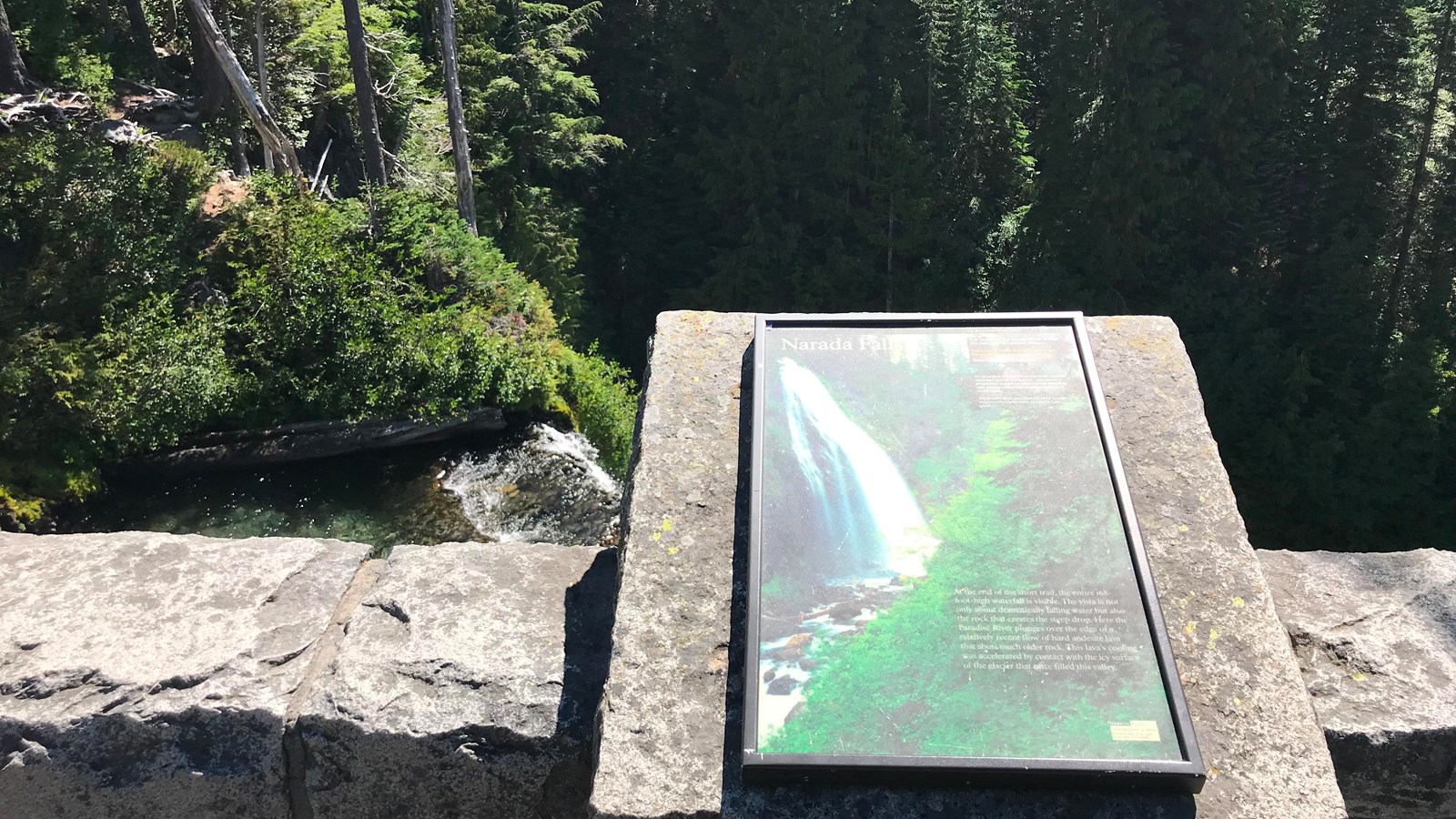Last updated: July 28, 2022
Place
Narada Falls Overlook Exhibit Panel

NPS Photo
Historical/Interpretive Information/Exhibits, Parking - Auto, Scenic View/Photo Spot
Title: Narada Falls
Main Text
At the end of the short trail, the entire 168-foot-high waterfall is visible. The vista is not only about dramatically falling water but also the rock that creates the steep drop. Here the Paradise River plunges over the edge of a relatively recent flow of hard andesite lava that abuts much older rock. This lava's cooling was accelerated by contract with the icy surface of the glacier that once filled this valley.
Secondary Text
Trail begins on the far side of the bridge. The path may be wet and slippery. Trail data: 0.2 mile (0.4 mile round trip), steep (200-foot descent/ascent).
For some early visitors, the power of the waterfall suggested spirtual connections. They named it Narada after a powerful sage of Hindu mythology who acted as a messenger between human and divine realms.
The Paradise River runs clear, not milky, because it orginates from snowfields, not debris-laden glaciers.
Exhibit Panel Description
A single photo fills the vertically-oriented exhibit panel. In the photo, the top half of a waterfall cascades over a cliff face before free-falling the rest of the way into a narrow river gorge. The opposite side of the gorge from the falls is covered in bright green shrubs and foliage. The main text overlays the green hillside on the lower right side of the panel. The secondary text is in the upper right corner of the photo. After the trail data section of text (see secondary text above) a photo caption reads "View from the base of waterfall". A small box in the lower right corner of the exhibit panel reads "User Fee Project. Your Fee Dollars at Work. Entrance fees were used to produce this exhibit".
Visit This Exhibit Panel
The Narada Falls Overlook Exhibit Panel is located from the upper falls viewpoint at the Narada Falls pullout along the Paradise Road. The Paradise Road is open year-round, but closes nightly during the winter. During the winter, the trail to the lower viewpoint can be extremely icy and snow-covered.
